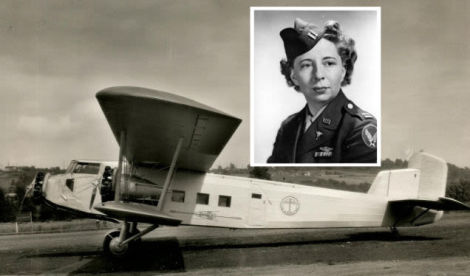Welcome to This Date in Aviation History, getting of you caught up on milestones, important historical events and people in aviation from May 13 through May 15.
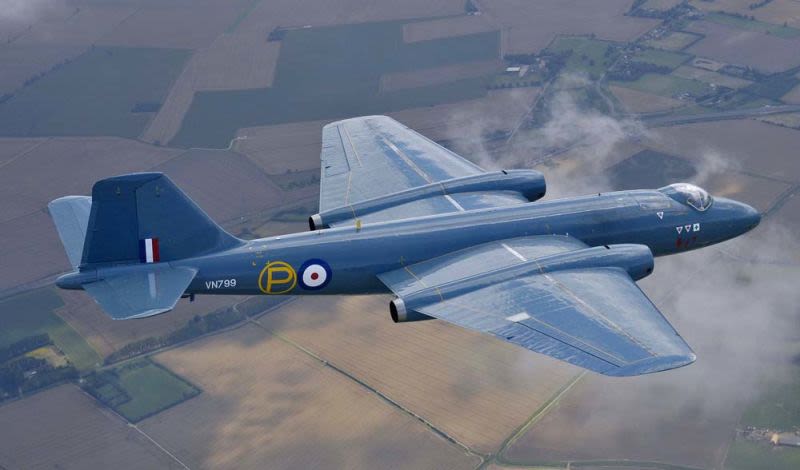
May 13, 1949 – The first flight of the English Electric Canberra. With a mere 44 years from first flight to the breaking of the sound barrier, the history of aviation is notable for incredibly rapid technological development. On a smaller scale, aircraft that were cutting edge technology when they took their first flight are often eclipsed by newer designs in only a few years, and some are obsolete the first time they turn a wheel or even before they come off the assembly line. But a handful of aircraft have proven to be so rugged, so reliable, and so adaptable to changing mission requirements that they reached and surpassed the extraordinary milestone of 50 years of active service, and one of those diehards is the English Electric Canberra.
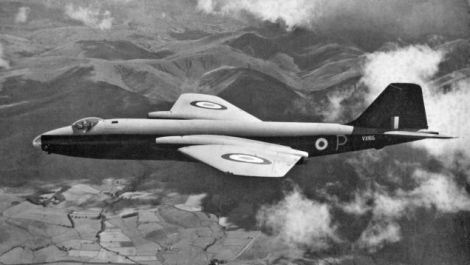
The Canberra arose from a British Air Ministry requirement for a bomber to replace the remarkable de Havilland Mosquito, a piston-powered, multi-role fighter bomber that served with great distinction during WWII. Though several well established manufacturers offered proposals, English Electric was named a finalist, even though they had a very sparse history of aircraft manufacture. Up to that point, their entire aircraft construction experience came from manufacturing the Handley Page Hampden and Halifax bombers, which they built under license during the war. But with the Canberra, English Electric took cues from de Havilland and adopted the design ethos of the Mosquito: put the most powerful engines available into the lightest, most aerodynamic airframe you can design, and then provide the greatest possible space for weaponry. With these principals in mind, English Electric designed an aerodynamically clean airframe with no fuselage protrusions, and powered the bomber with two Rolls-Royce Avon turbojet engines mounted in the broad wings. Though designers considered swept wings, they chose instead to use wings that tapered outboard of the engine nacelles, since the Canberra’s mission requirements did not call for great speed. Maneuverability was considered of greater importance. In some regards, the Canberra actually resembled a scaled up Gloster Meteor, the first British jet fighter to enter production.
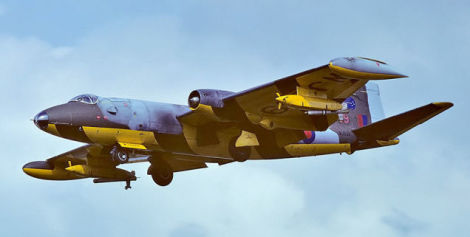
The Air Ministry ordered four prototypes, and by the time the first prototype took its maiden flight, orders had already been placed for 132 aircraft. Despite their lack of experience, English Electric produced an aircraft that was so easy to fly that new pilots required only 20 hours of jet training on the Meteor followed by a mere three hours of training in the dual-control Canberra trainer. The Canberra entered service with the Royal Air Force in 1951 and quickly showed its mettle. With a top speed of 580 mph, it was capable of outrunning contemporary jet fighters until the introduction of the Hawker Hunter, and an RAF Canberra won the “Last Great Air Race” in 1953 by covering the 12,300 mile distance from London to Christchurch, New Zealand in just under 24 hours, a record that still stands. Though the Canberra had been envisioned as a tactical nuclear bomber, early nuclear bombs were too large for it to carry, and early variants of the bomber suffered from relatively short range. Therefore, initial missions included tactical conventional bombing and reconnaissance. By 1957, changes in nuclear bomb design finally allowed the Canberra to take on the tactical nuclear attack mission, and bombers were stationed in Germany, Cyprus and Singapore to serve as a nuclear deterrent to the Soviet Union during the Cold War.
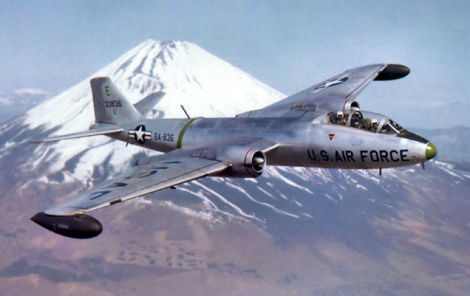
The Canberra also became a popular export aircraft, and when the US Air Force found themselves in dire need of a tactical bomber in Korea, they took the rare move of adopting the British-designed Canberra as the B-57 Canberra, with the Glenn L. Martin Company building and modifying just over 400 bombers. The B-57 earned the distinction of being the first American jet bomber to drop bombs in combat during missions over Vietnam in 1964. It also served extensively in the reconnaissance role.

As a testament to the Canberra’s adaptability, and the reason for its longevity, no less than 27 variants were produced, plus seven variants developed by Martin. The Canberra has also proven to be an excellent research aircraft, and though the USAF retired their B-57s by 1983, NASA still operates three WB-57Fs for high-altitude research, earth science, and mapping missions. The Royal Air Force retired their last Canberras in 2006 after a remarkable service life of 59 years.
Short Takeoff
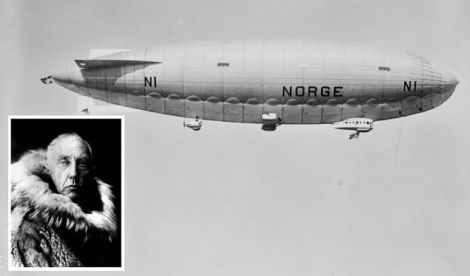
May 12, 1926 – Norwegian explorer Roald Amundsen carries out the first airship flight over the North Pole. Amundsen headed a 16-man expedition to cross the North Pole flying an Italian-built semi-rigid airship named Norge. After leaving Spitzbergen, Norway on May 11, the team reached the North Pole at 01:25 (GMT) on May 12 and dropped Norwegian, American and Italian flags onto the polar ice below. They had planned to continue to Nome, Alaska, but a build up of ice on the propellers forced them to land in Teller, Alaska. While others, including Frederick Cook, Robert Peary, and Richard Byrd, all claim to have reached the Pole before Amundsen, those claims remain subject to dispute. Only Amundsen’s flight has been officially verified.
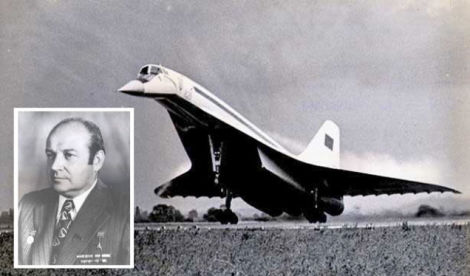
May 12, 2001 – The death of Alexei Tupolev. Tupolev was born in Moscow on May 20, 1925, the son of Andrei Tupolev, a pioneering aircraft designer and founder of the Tupolev Design Bureau. Alexei studied engineering at the Moscow Aviation Institute and slowly worked his way up through his father’s company. He became Chief Designer in 1963 and assumed control of the design bureau following his father’s death in 1972. Alexei’s work on the development of the Tu-104, the world’s first truly successful jet airliner, and his knowledge of jet propulsion, led to his heading the design team working on the Tu-144 supersonic airliner starting in 1963. Alexei also worked on the Tu-160 supersonic bomber, and Buran, Russia’s attempt to build its own space shuttle.
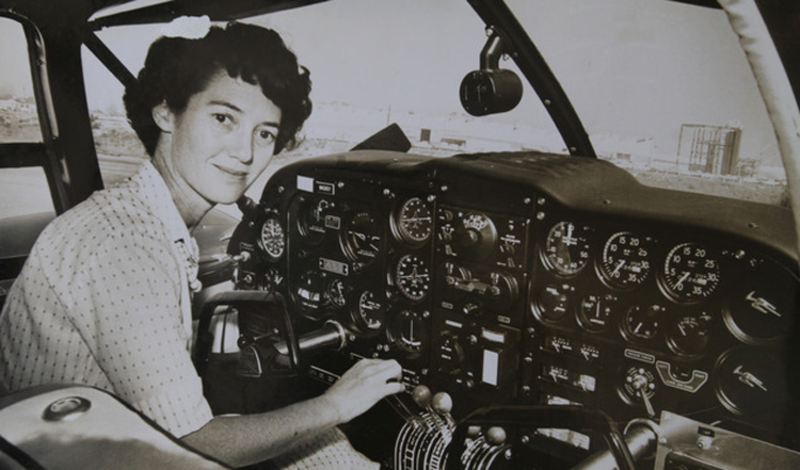
May 12, 1963 – Betty Miller becomes the first woman to fly solo across the Pacific Ocean. While many of the most famous record-breaking flights were carried out simply for notoriety or to prove that such a flight was possible, Miller’s flight from California to Australia was made simply to deliver a Piper PA-23 Apache (N4315Y) to its new owner. Miller, a commercial pilot and flight instructor, set out on April 25 and flew 17 hours from Oakland, California to Honolulu, Hawaii. After waiting four days in Hawaii for repairs to the plane’s radio, Miller flew on to Canton Island in the Phoenix Islands, then Fiji, then Noumea, New Caledonia. She finally reached Eagle Farm Airport in Queensland, Australia on May 12 after covering 7,400 miles and spending 51 hours, 38 minutes in the air. In recognition of her feat, Miller received both the Federal Aviation Administration Gold Medal for Exceptional Service and the Harmon Trophy.
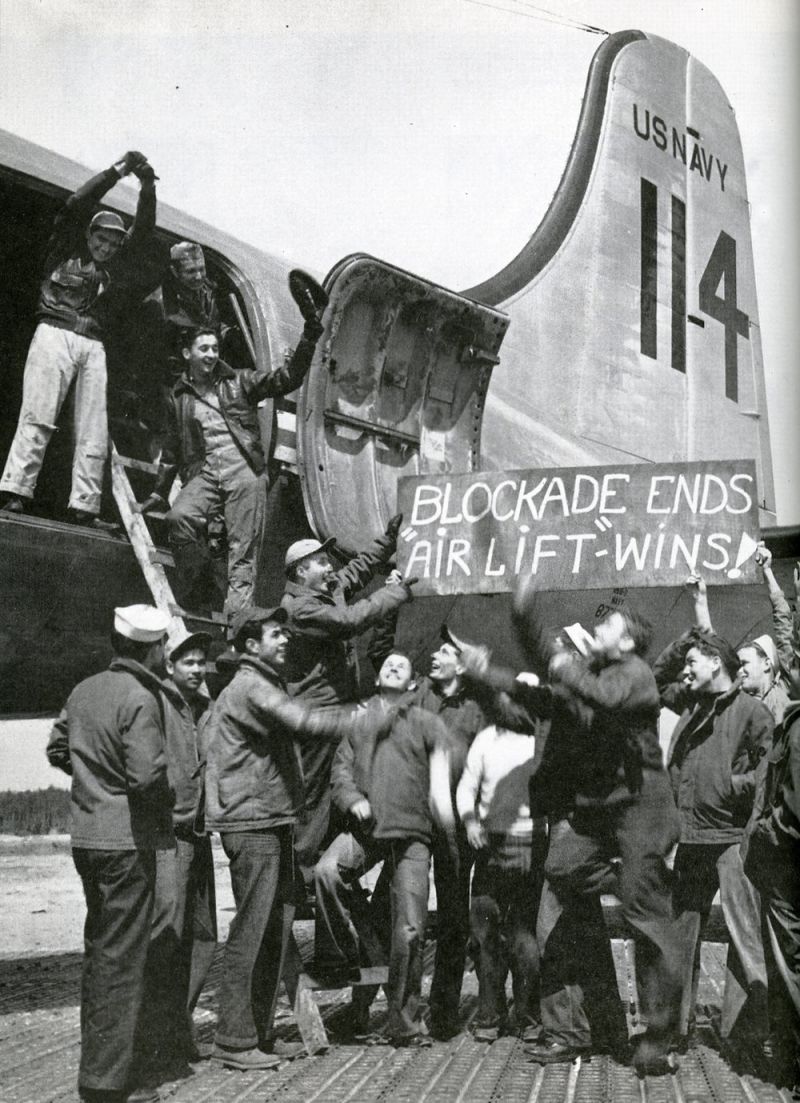
May 12, 1949 – The Soviet blockade of West Berlin ends. In the first major international crisis of the Cold War, the Soviet Union began a blockade of the city of Berlin on June 24, 1948 in an effort wrest control of the western sectors of the city from the Western allies. While the Soviets were able to block all land travel to the city, they could not halt air traffic, and the Allies began supplying the city by air in what came to be known as the Berlin Airlift. By the end of August 1948, 1,500 flights per day—one landing every minute—were delivering more than 5,000 tons of cargo, enough to keep the city fed and powered in spite of the blockade. On Easter Sunday 1949, cargo aircraft managed to deliver 13,000 tons of cargo, including the equivalent of 600 railroad cars of coal. The airlift continued for 11 months, made more than 189,000 flights totaling nearly 600,000 hours of flying, and amassed more than 92 million miles flown. Faced with this herculean effort, the Soviets finally conceded and lifted the blockade at 12:01 am on May 12, 1949. West Berlin remained a free city, and it stood as an important symbol of the West’s resolve to fight the spread of Communism in Europe until the reunification of Germany in 1990.
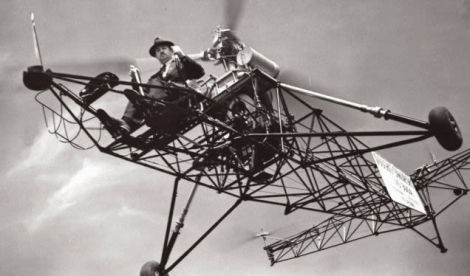
May 13, 1940 – The Sikorsky VS-300 makes its first untethered flight. Igor Sikorsky’s quest for a viable rotorcraft lead to the development of the VS-300 in 1938. However, Sikorsky had particular difficulty figuring out a system for cyclic control. So, as a safety measure, he undertook a series of tethered flights to work out the details of the control system. Once solved, Sikorsky untethered the helicopter and achieved completely controlled free flight. The VS-300 became the first single lifting-rotor helicopter in the US, and the first successful helicopter to use a single vertical tail rotor. The VS-300 was also the first to employ a single engine to power both rotors. The basic control system devised by Sikorsky is still in use today.
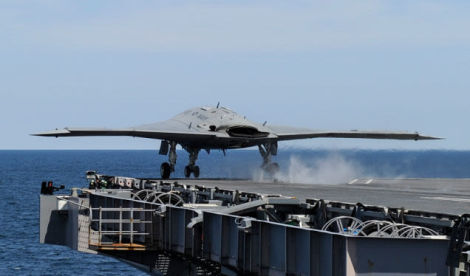
May 14, 2013 – The Northrop Grumman X-47B becomes the world’s first unmanned aircraft to launch from an aircraft carrier. In 2000, the US Navy committed to the development of an Unmanned Combat Air System (UCAS) and awarded contracts for demonstrator aircraft to Boeing and Northrop Grumman. Following its launch from the nuclear carrier USS George H.W. Bush (CVN 77), the X-47B performed the first autonomous touch-and-go landings three days later and the first arrested carrier landing on July 10 of that year. The X-47B later demonstrated autonomous aerial refueling in April of 2015. The X-47 program has finished, and the Navy is now focusing on the development of an autonomous Carrier-Based Aerial-Refueling System (CBARS) with delivery scheduled for 2021.
May 14, 2005 – Didier Delsalle lands a helicopter on the summit of Mt. Everest. Delsalle began his flying career in 1979 as a fighter pilot before transitioning to helicopters and working as a search and rescue pilot, and eventually became the chief test pilot for Eurocopter (now Airbus Helicopters). Flying a Eurocopter AS350 Écureuil (Squirrel), Delsalle touched down on the summit of Mt. Everest at an elevation of 29,029 feet, marking not just the highest elevation ever landed on but also the highest elevation possible on Earth. Delsalle repeated the feat the following day under more adverse conditions. The AS350 was only modified by the removal of seats to lighten the aircraft’s weight, and Delsalle reported that he discovered such strong updrafts that he barely needed any of the helicopter’s power to reach the summit.
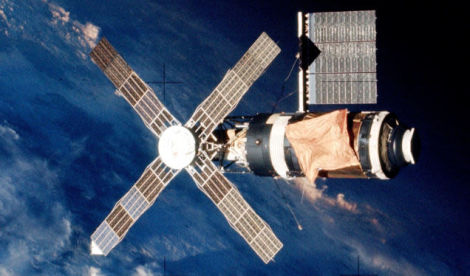
May 14, 1973 – The launch of Skylab, the United States’ first orbiting space station. Skylab was launched from Kennedy Space Center atop a modified Saturn V rocket and orbited Earth for six years. During that time, NASA sent three manned missions to the station, where the crews performed scientific experiments and made observations of the Earth and Sun. NASA originally intended to use the Space Shuttle, under development at the time, to boost Skylab to a higher orbit, refurbish it, and expand it to accommodate six to eight astronauts, thus extending Skylab’s mission for an additional five years. However, delays in the Shuttle program made that impossible, and Skylab re-entered the atmosphere and disintegrated over the Pacific Ocean and western Australia in 1979.

May 14, 1939 – The first flight of the Short Stirling, a heavy bomber developed for the RAF and the first four-engine heavy bomber of WWII. The Stirling entered service in 1941 and was capable of carrying an enormous 14,000-pound bomb load. It was also larger than both the four-engine Handley Page Halifaxand the Avro Lancaster, the bombers that were designed to replace it. However, both of those aircraft were modified from twin-engine aircraft, while the Stirling was conceived with four engines from the outset. The Stirling’s service life was relatively short, and it was withdrawn from frontline duties by 1943. Following its withdrawal, it was used primarily for mine laying, and also played a significant role in the D-Day invasion as a glider tug.
May 14, 1928 – Mickey Mouse makes his debut in the short animated film Plane Crazy. Though the animated short Steamboat Willie, which debuted in November of the same year, marked Mickey Mouse’s debut in talking pictures, Plane Crazy debuted six months earlier and marked the true debut of Walt Disney’s most famous character. A silent picture in the nascent era of the talkie, Plane Crazy failed to find a distributor, and was re-released on March 17, 1929 with a sound track, making it the fourth Mickey Mouse film after Steamboat Willie, The Gallopin’ Gaucho, and The Barn Dance.
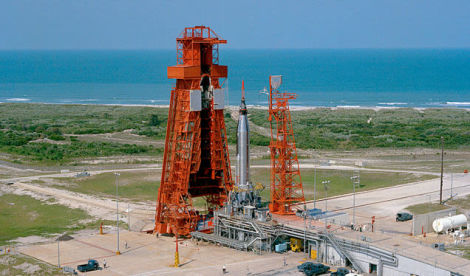
May 15, 1963 – The launch of Mercury-Atlas 9, the sixth manned and final flight of Project Mercury, and the last time NASA launched a spacecraft with only a single astronaut on board. Astronaut Gordon Cooper completed 22 orbits of the Earth in the Faith 7 capsule before splashing down in the Pacific Ocean on May 16. The flight marked the first time an American astronaut spent an entire day in space (officially, the flight lasted 1 day, 10 hours, 19 minutes, 49 seconds), and Cooper was also the first American to sleep in space. Following Project Mercury, NASA moved on to the two-man Project Gemini, where Cooper flew as Command Pilot of Gemini 5, making him the first astronaut to make a second orbital flight.

May 15, 1941 – The first flight of the Gloster E.28/39, the first British jet-powered aircraft. British engineer Frank Whittle is credited with the invention of the turbojet engine (though credit for the first operational jet engine goes to Germany’s Dr. Hans von Ohain) and, in September of 1939, Gloster received a specification from the Air Ministry for an airplane that could test one of Whittle’s new engines in flight. The result was the Gloster E.28/39 (the unwieldy name comes from the aircraft’s conforming to the 28th specification in the year 1939), and two prototypes were ordered. Testing proved successful, and paved the way for the Gloster Meteor, the first British jet fighter and the first operational Allied jet aircraft of WWII.
May 15, 1930 – Ellen Church becomes the world’s first flight attendant. Born in Cresco, Iowa in 1904, Church was a pilot and registered nurse whose goal was to become an airline pilot. When Boeing Air Transport (eventually United Airlines) refused to hire her in that capacity, Church put her nursing skills to work and was hired in the position of stewardess in order to help ease the fears of nervous passengers. Church took her first flight as a stewardess on May 15, 1930 on a Boeing 80A flying from Oakland to San Francisco. Though an automobile accident ended her flying career after just 18 months, Church served in the Army Nurse Corps in WWII as a flight nurse, where she earned the Air Medal. Church died in a horse riding accident in 1965.
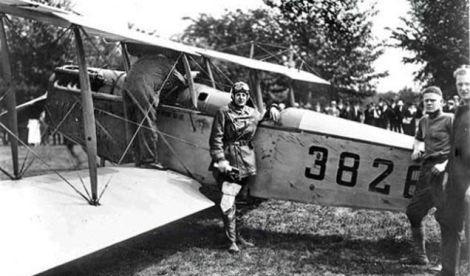
May 15, 1918 – The first regular US airmail service commences. With the advent of (relatively) reliable air transport following WWI, the US Army Air Service took on the job of transporting United States mail. Under the command of Major Reuben Fleet, six Curtiss HN-4HM “Jenny” biplanes began operating on the route between Washington, DC and New York City, with a stop in Philadelphia, PA. However, the service got off to an inauspicious start when Army pilot 2nd Lt. George Boyle got lost and made a hard landing when he stopped to ask for directions. As a result, the first delivery had to be completed by truck. After four months, the Air Mail service was taken over by the US Post Office Department employing civilian pilots.
Connecting Flights
If you enjoy these Aviation History posts, please let me know in the comments. You can find more posts about aviation history, aviators, and aviation oddities at Wingspan.
